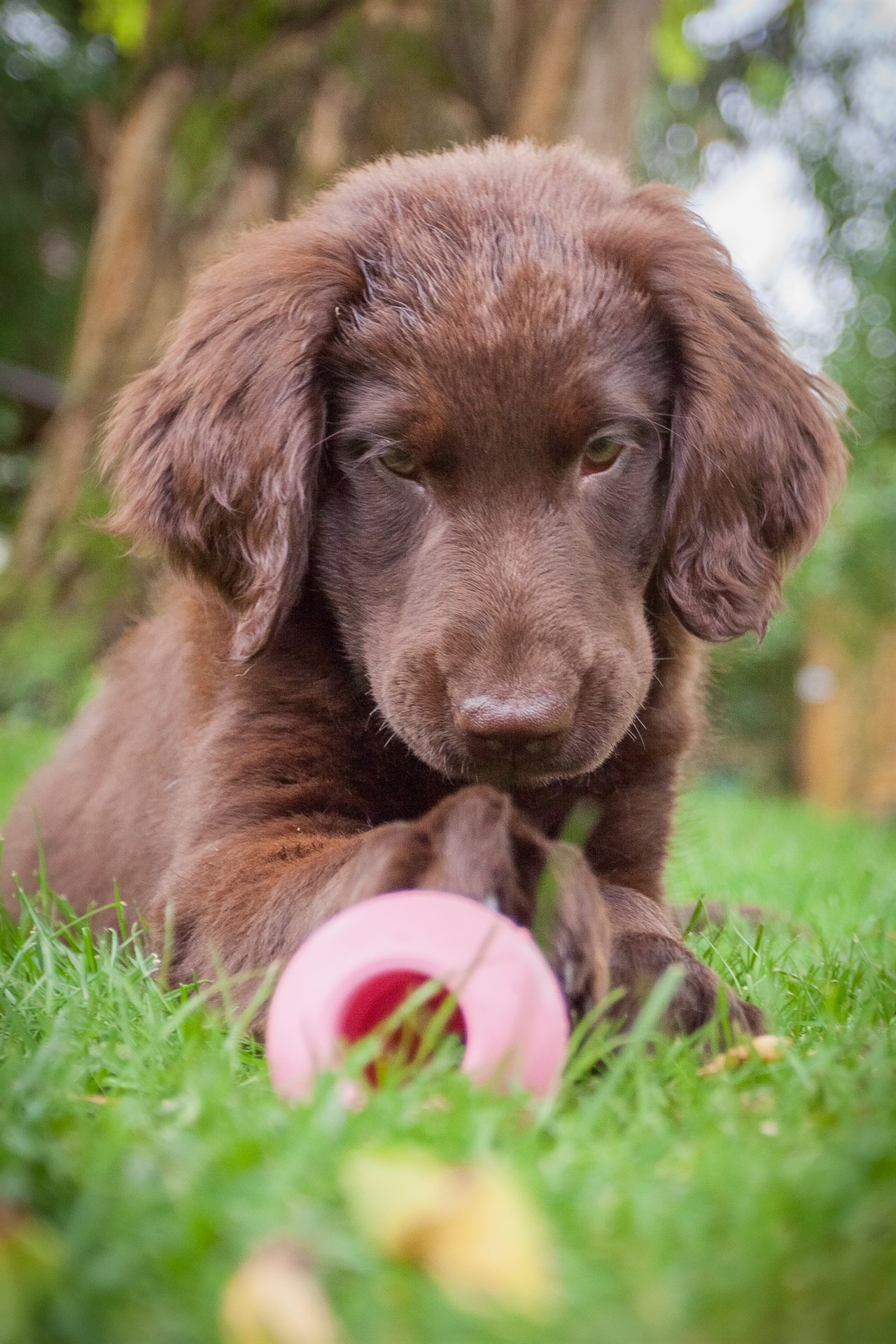The Trainability of the Flat-Coated Retriever

Flat-Coated Retrievers are known for their intelligence, eagerness to please, and friendly disposition, which generally makes them highly trainable dogs. They thrive on human interaction and are quick learners, making them a good choice for various types of training, from basic obedience to advanced tricks and tasks. However, like any breed, there are unique considerations when it comes to training Flat-Coated Retrievers.
Intelligence
Flat-Coated Retrievers are a highly intelligent breed. They tend to pick up new commands and tasks relatively quickly. Their sharp minds make them versatile in various dog sports and activities, such as agility, obedience trials, and even search and rescue work. However, their intelligence can also lead to boredom if not mentally stimulated, so keeping training sessions engaging and challenging is essential.
Eagerness to Please
One of the standout qualities of this breed is their strong desire to please their owners. They are motivated by praise, treats, and positive reinforcement. This eagerness to please makes them responsive to training and helps build a strong bond between the dog and owner.
Social Nature
Flat-Coated Retrievers are social dogs that enjoy human interaction. They thrive on positive attention and are often cooperative during training sessions. Their friendly disposition makes them well-suited for group training classes and activities that involve working closely with their owners.
Playfulness
Their playful nature can be a double-edged sword in training. While it can make training sessions fun and enjoyable, it can also lead to moments of distraction if they become overly excited. Incorporating play and games into training can help keep them engaged and focused.
Consistency is Key
Consistency is crucial when training a Flat-Coated Retriever. Clear and consistent communication, along with a predictable routine, helps them understand what is expected of them. Mixed messages or inconsistent training can confuse them and impede their progress.
Positive Reinforcement
Positive reinforcement training methods work exceptionally well with Flat-Coated Retrievers. Using rewards such as treats, praise, and toys to reinforce desired behaviors helps motivate them to excel in training. They respond best to gentle and encouraging approaches rather than harsh or punitive methods.
Socialization
Early socialization is vital for this breed. Exposing them to various people, animals, environments, and experiences at a young age helps them grow up to be well-adjusted and confident dogs. Socialization enhances their ability to interact positively with other dogs and people, reducing the risk of behavioral issues.
Exercise and Mental Stimulation
In addition to formal training, Flat-Coated Retrievers require regular exercise and mental stimulation. A well-exercised and mentally engaged dog is more receptive to training sessions and less likely to develop behavioral problems stemming from boredom.
Patience and Perseverance
While Flat-Coated Retrievers are generally trainable, they may occasionally display a bit of stubbornness or independence, especially during adolescence. Patience and perseverance are key when dealing with any training challenges that may arise.
Conclusion
In summary, Flat-Coated Retrievers are highly trainable dogs known for their intelligence, eagerness to please, and friendly nature. Their adaptability and versatility make them suitable for a wide range of training activities and tasks. However, it's important to remember that individual dogs may vary in their temperament and responsiveness to training, so an individualized approach may be necessary. Whether you're teaching basic commands or engaging in advanced training, the bond you can build with a Flat-Coated Retriever through training is a rewarding and fulfilling experience for both dog and owner.
Flat Coated Retriever puppies for sale
- Find Flat Coated Retriever puppies for sale in ACT
- Find Flat Coated Retriever puppies for sale in NSW
- Find Flat Coated Retriever puppies for sale in NT
- Find Flat Coated Retriever puppies for sale in QLD
- Find Flat Coated Retriever puppies for sale in SA
- Find Flat Coated Retriever puppies for sale in TAS
- Find Flat Coated Retriever puppies for sale in VIC
- Find Flat Coated Retriever puppies for sale in WA